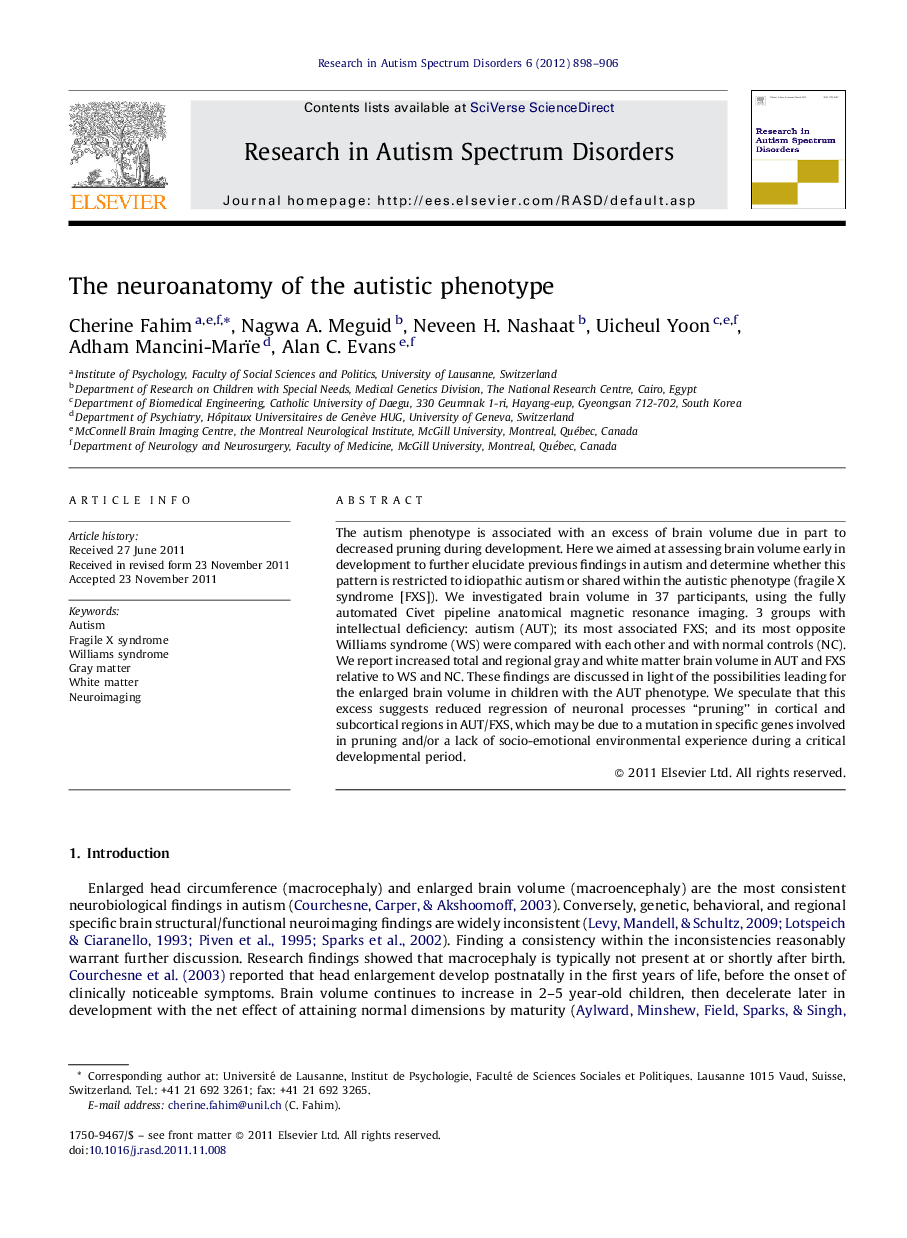| Article ID | Journal | Published Year | Pages | File Type |
|---|---|---|---|---|
| 370712 | Research in Autism Spectrum Disorders | 2012 | 9 Pages |
The autism phenotype is associated with an excess of brain volume due in part to decreased pruning during development. Here we aimed at assessing brain volume early in development to further elucidate previous findings in autism and determine whether this pattern is restricted to idiopathic autism or shared within the autistic phenotype (fragile X syndrome [FXS]). We investigated brain volume in 37 participants, using the fully automated Civet pipeline anatomical magnetic resonance imaging. 3 groups with intellectual deficiency: autism (AUT); its most associated FXS; and its most opposite Williams syndrome (WS) were compared with each other and with normal controls (NC). We report increased total and regional gray and white matter brain volume in AUT and FXS relative to WS and NC. These findings are discussed in light of the possibilities leading for the enlarged brain volume in children with the AUT phenotype. We speculate that this excess suggests reduced regression of neuronal processes “pruning” in cortical and subcortical regions in AUT/FXS, which may be due to a mutation in specific genes involved in pruning and/or a lack of socio-emotional environmental experience during a critical developmental period.
Graphical abstract. The neuroanatomy of the autistic phenotype. Cherine Fahim, Nagwa Meguid, Neveen H. Nashaat, Uicheul Yoon, Adham Mancini-Marïe, Alan C. Evans. Note the differences in gray and white matter volume in children with autism (AUT) relative to fragile X syndrome (FXS), Williams syndrome (WS) and normal controls (NC).Figure optionsDownload full-size imageDownload as PowerPoint slideHighlights► Children with autism show increased brain gray and white matter volume. ► Children with FXS with the autism behavioral phenotype show increased brain volume. ► Children with Williams syndrome with no autism display decreased brain volume. ► Increased brain volume is associated with the autism phenotype in children.
